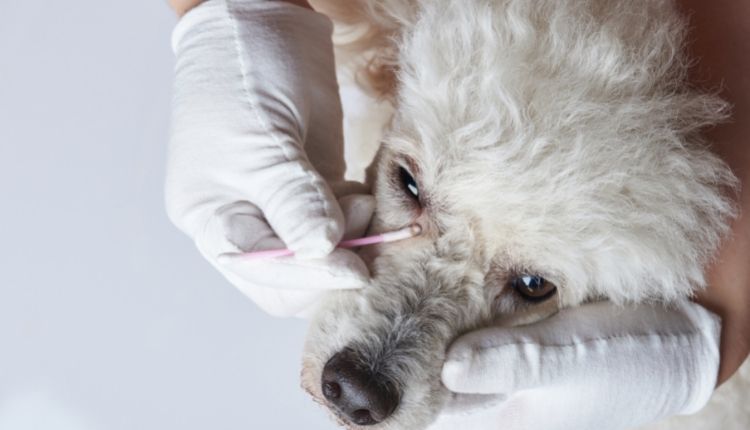Can Dogs Get Mange From Foxes? Learn More From Expert
Can Dogs Get Mange From Foxes? Highly contagious diseases are often transmitted by infected urban foxes (hence the nickname “fox mange”) but can also be transmitted by direct dog-to-dog contact or shared bedding. I have. It is often transmitted in kennels, dog parks, groomers, and animal shelters.

How Can Dogs Get Mange From Foxes?
Dogs can get mange from foxes if the fox is carrying the disease. Foxes are highly contagious and can spread mange to dogs easily.

Dogs that are infected with mange may have patches of hair that are dry, cracked, red, scaly, or thickened. The dog may also be feverish and have a poor appetite.
Treatment for mange usually includes antibiotics and medication to cut down on inflammation in the skin.
Signs and symptoms of sarcoptic management:

-Loss of hair on the body, most commonly around the face and feet
-Dry skin that becomes red, cracked, and scaly
-Fever, poor appetite, and general discomfort
-If left untreated, the disease can lead to permanent damage to the skin and nails.

Treatment for sarcoptic mange:
-If you think your dog has mange, the first step is to take them to a veterinarian for a diagnosis.
-Your veterinarian will likely prescribe antibiotics and various medications to help reduce skin inflammation and treat the infection.
-In severe cases, surgery may be necessary to remove affected hair and restore normal skin function.
Preventing sarcoptic mange:
-Make sure you keep your dog clean and vaccinated against rabies.
-Avoid contact with infected animals, including foxes.
-make sure your dog has enough exercise and fresh air. If your dog acquires mange from foxes, be sure to take them to a veterinarian as soon as possible for treatment.
Prevention is the best way to avoid this disease, so make sure you keep your pet healthy and vaccinations up-to-date.
Dog vaccinations and booster vaccinations:
There is no one-size-fits-all answer to this question, as each dog will require a different vaccination schedule.
However, some of the most common vaccinations your dog may need include: DPT shots for protection against distemper and hepatitis A; rabies vaccines for Rottweilers, American Staffordshires,
German Shepherds, and other large breeds; feline leukemia vaccine (FVRCP) if your pet lives in a household with cats; and canine hepatitis B vaccine if your dog is likely to share spaces with other animals.
Your veterinarian may also recommend additional vaccines, depending on your pet’s lifestyle and exposure to other pathogens.
Lungworm in dogs:
Dogs can contract lungworm from consuming infected soil, water, or food. Clinical signs of infection usually onset within two weeks after exposure and may include coughing, nasal discharge, and fever.
Treatment is with anthelmintic drugs (such as albendazole or mebendazole) that kill the larval stage of the worm.
Symptoms typically improve within a week but can persist for several months in some cases; regular preventive treatment is important to keep worm loads low.
Alabama Rot in Dogs:
Alabama Rot (an infection of the dog’s nose, mouth, and throat) is a highly contagious disease that can be spread through contact with respiratory secretions, saliva, or mucous from an infected animal.
Symptoms may include muzzle swelling, coughing, and difficulty breathing. Alabama Rot is most commonly contracted during warm weather months in areas where ticks are common; dogs should be vaccinated against Lyme disease if they live in such an area.
Treatment involves antibiotics to kill the bacteria, and recovery is usually complete.
Conclusion:
Can Dogs Get Mange From Foxes? Mange is a common skin disorder in dogs caused by several different viruses. While foxes can occasionally carry mange mites that spread the disease to dogs, the chances of this happening are very low.
In fact, most cases of mange in dogs are caused by one of several viruses and cannot be passed from dog to fox. If you think your dog may have been infected with mange, take him to a veterinarian for diagnosis and treatment.





